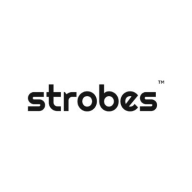


Strobes and Unified Vulnerability Management are products in the cybersecurity category. Unified Vulnerability Management appears to have the upper hand due to its comprehensive feature set.
Features: Strobes includes streamlined threat detection, effective risk prioritization, and high-level integration. Unified Vulnerability Management focuses on comprehensive scanning, extensive reporting, and integration with existing systems.
Ease of Deployment and Customer Service: Strobes offers a straightforward deployment model and efficient customer service for quick implementation. Unified Vulnerability Management provides a complex deployment model with responsive support for smooth transitions.
Pricing and ROI: Strobes is known for a cost-effective setup and scalable processes, while Unified Vulnerability Management has a higher initial cost with compelling ROI from its extensive features.

Zafran Security integrates with existing security tools to identify and mitigate vulnerabilities effectively, proving that most critical vulnerabilities are not exploitable, optimizing threat management.
Zafran Security introduces an innovative operating model for managing security threats and vulnerabilities. By leveraging the threat exposure management platform, it pinpoints and prioritizes exploitable vulnerabilities, reducing risk through immediate remediation. This platform enhances your hybrid cloud security by normalizing vulnerability signals and integrating specific IT context data, such as CVE runtime presence and internet asset reachability, into its analysis. No longer reliant on patch windows, Zafran Security allows you to manage risks actively.
What are the key features of Zafran Security?
What benefits can users expect from Zafran Security?
In industries where security is paramount, such as finance and healthcare, Zafran Security provides invaluable protection by ensuring that only exploitable vulnerabilities are addressed. It allows entities to maintain robust security measures while allocating resources efficiently, fitting seamlessly into existing security strategies.
Strobes is a powerful tool for vulnerability management, helping teams identify, prioritize, and address security risks with real-time insights and streamlined workflows.
Strobes integrates with a wide array of security tools to ensure comprehensive vulnerability management. It allows users to customize workflows, streamlining the process of tracking and remediating issues. Automation of repetitive tasks and context-based prioritization significantly boosts efficiency. However, better integration with existing tools, improved scalability, and faster performance are needed. Enhancements in customizable dashboards and advanced reporting features, plus updated training materials, are vital for maximizing its potential.
What are the key features of Strobes?Strobes is implemented across various industries where security is a priority. Financial services, healthcare, technology, and retail sectors benefit from its ability to integrate seamlessly and provide real-time insights into potential threats, helping maintain stringent security measures and protect sensitive data.
Unified Vulnerability Management streamlines the identification and management of security risks. It's designed to enhance cybersecurity efforts by providing consolidated tools and insights for managing vulnerabilities.
Unified Vulnerability Management plays a crucial role in cybersecurity by centralizing tools and processes, optimizing risk management with real-time insights, and offering customizable reporting. Its integrated approach allows organizations to address threats promptly, ensuring a proactive security posture.
What are the key features of Unified Vulnerability Management?In sectors like finance and healthcare, Unified Vulnerability Management is implemented to meet compliance requirements and protect sensitive data. Its robust capability to manage complex environments supports integration into diverse organizational frameworks, ensuring tailored solutions for industry-specific challenges.
We monitor all Risk-Based Vulnerability Management reviews to prevent fraudulent reviews and keep review quality high. We do not post reviews by company employees or direct competitors. We validate each review for authenticity via cross-reference with LinkedIn, and personal follow-up with the reviewer when necessary.